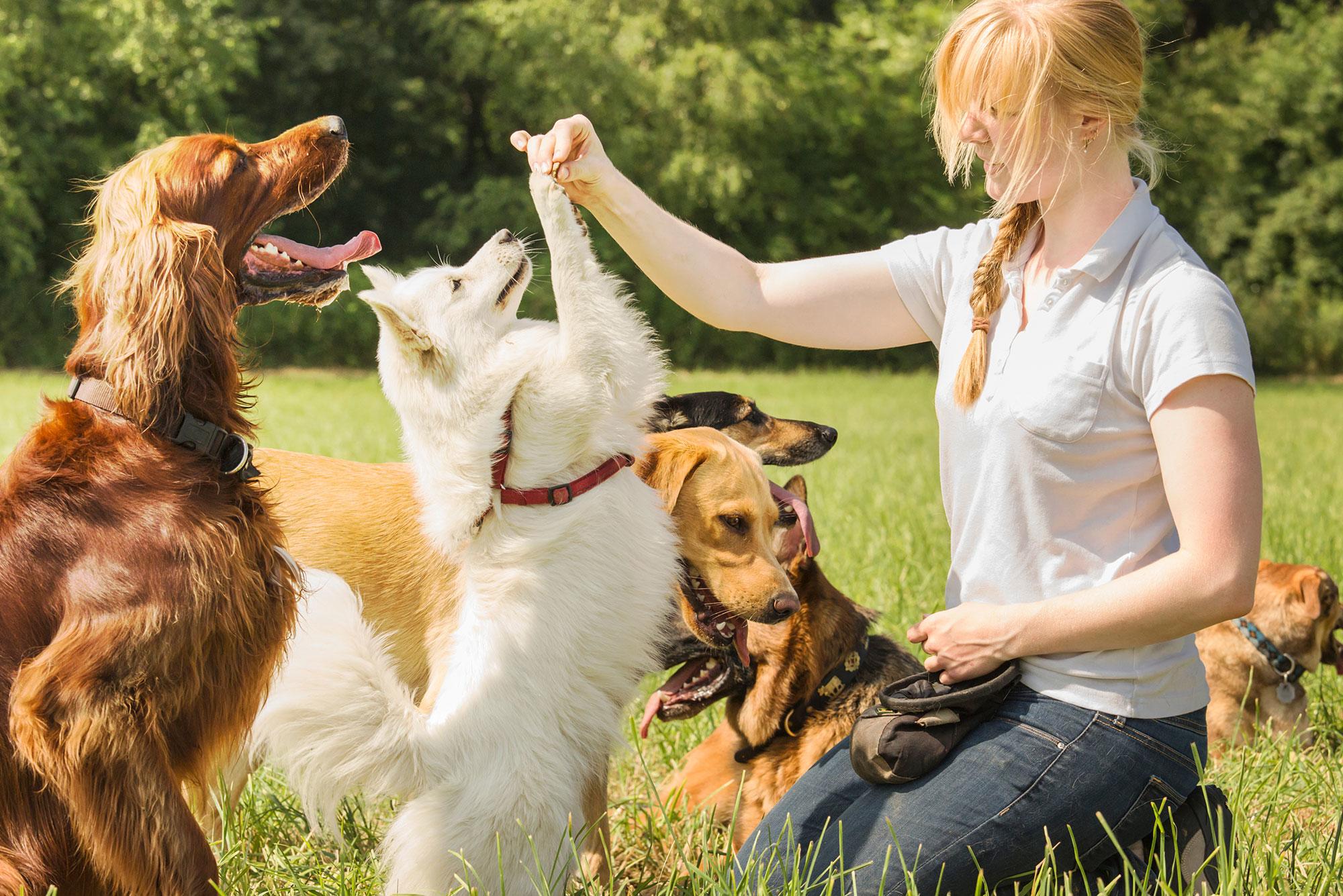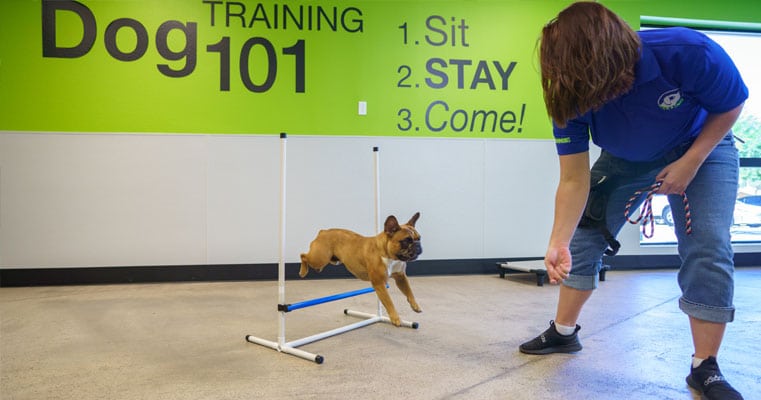Novice's Guide to Successful Dog Training in your home
Efficiently training a canine at home calls for a nuanced understanding of canine actions and effective interaction techniques. Developing clear training objectives, making use of high-quality incentives, and keeping consistency throughout member of the family are critical components. Incorporating training right into day-to-day regimens can boost both engagement and retention. Many newbie fitness instructors run into challenges that may impede development. To browse these complexities properly, it's vital to check out a number of key facets that can change your method and lead to a harmonious partnership with your pet dog. What fundamental concepts should every novice grip to guarantee success?
Comprehending Canine Behavior
Comprehending pet dog behavior is important for effective training and promoting an unified connection between humans and their canine buddies. Pet dogs interact primarily with body movement, vocalizations, and faces, making it vital for owners to interpret these signals accurately. Recognizing actions such as tail wagging, roaring, or cring can give insights into a dog's emotion and objectives.

Usual behavior issues, such as aggressiveness, anxiety, or too much barking, frequently stem from misunderstandings or unmet demands. Observing and attending to these concerns quickly can stop acceleration and ensure a positive training experience. By promoting a deep understanding of pet actions, owners can tailor their training methods to fit their canine buddies, eventually bring about a contented and mannerly family pet.
Important Educating Devices
A well-equipped training area can dramatically enhance the effectiveness of canine training at home. Vital training tools make sure that both the instructor and the dog can take part in efficient sessions that promote learning and bonding.

Purchasing a strong chain and a comfortable, well-fitting collar or harness is vital for safety and security and control. These devices help develop borders and ensure the pet dog continues to be secure throughout training. Additionally, a designated training location, free from distractions, help concentration for both the trainer and the pet.
Training help such as training pads, cones, or agility tools can likewise enhance the experience by presenting range and difficulties. Having a notebook or electronic application for tracking development can be very useful, allowing you to note successes and locations for renovation. Utilizing these crucial devices will certainly produce a favorable training setting and lay the foundation for efficient discovering.
Creating a Training Routine
Establishing a regular training regimen is essential for efficient pet dog training at home. A well-structured routine not only assists in strengthening wanted behaviors but likewise supplies your pet with a sense of security and predictability. To produce an efficient training regular, start by recognizing details training goals, such as fundamental commands, chain strolling, or housebreaking.
Select an assigned time every day for training sessions, preferably when your pet dog is responsive and sharp. Procedure should be short, about 5 to 15 minutes, to maintain focus and protect against exhaustion. Consistency in timing and atmosphere will enhance your canine's knowing experience.
Integrate training into daily activities to reinforce skills. Practice commands throughout strolls or mealtime, which integrates learning right into natural routines. Additionally, continue to be versatile and change the routine as essential, suiting your pet dog's energy degrees and state of mind.
Positive Reinforcement Strategies
Positive support strategies are essential to effective pet training, promoting desired actions with incentives instead of punishment. This approach makes use of positive stimuli, such as treats, appreciation, or playtime, to urge pet dogs to repeat you can try here details activities. The cornerstone of this strategy is timing; benefits ought to be offered instantly following the desired actions to develop a clear organization.
When carrying out positive support, it is vital to choose benefits that are encouraging for your canine. High-value deals with, such as small items of chicken or cheese, can be specifically effective during training sessions. In addition, varying the incentives can maintain your canine's passion and enthusiasm.
Begin with easy commands, like "sit" or "remain," and gradually development to extra complex jobs. Uniformity is key; make sure that all household members utilize the exact same commands and incentive systems to avoid confusion.
Furthermore, it is essential to remain individual and stay clear of stress. Canines, like people, find out at their own speed. By cultivating an encouraging training environment with favorable support, you can enhance your Read Full Article canine's discovering experience while reinforcing the bond between you and your furry buddy, laying the foundation for effective training end results.
Common Training Difficulties
While educating a pet at home can be a gratifying experience, it usually includes a set of common challenges that can check both patience and uniformity. One widespread concern is interruption. Canines may end up being quickly sidetracked by noises, motions, or also fragrances in their atmosphere, making it tough to keep their emphasis during training sessions.
Another challenge is disparity in commands and reinforcement. If relative use various hints or benefits, it can hinder and confuse the pet progression. Establishing a unified method is vital for effective communication.
In addition, pet dogs can experience stress or stress and anxiety, specifically if they do not comprehend what is expected of them. This can bring about unfavorable behaviors, such as eating or barking.
Lastly, the timing of reinforcement is critical (Dog training). Postponed benefits can diminish the effectiveness of favorable reinforcement, as dogs might stop working to connect the actions with the benefit
Overcoming these obstacles requires commitment, clear interaction, and an organized training strategy. Acknowledging and attending to these typical challenges will certainly lead the way for an extra successful and enjoyable training experience in your home.
Conclusion
In verdict, successful pet dog training at home requires a comprehensive understanding of canine habits and effective interaction techniques. By establishing clear important link training goals and making use of top quality deals with alongside favorable support, the training process comes to be much more fulfilling for both the canine and the fitness instructor. Uniformity, patience, and adaptability are vital elements that promote learning. Ultimately, integrating training into day-to-day regimens boosts the bond between canine and proprietor, making the experience both pleasurable and effective.
Developing a regular training routine is important for effective canine training at home.Positive reinforcement methods are basic to efficient canine training, advertising wanted behaviors with rewards rather than penalty (Dog training). By cultivating a supportive training environment via favorable support, you can boost your dog's understanding experience while reinforcing the bond in between you and your furry buddy, laying the groundwork for successful training results
In final thought, effective canine training at home requires a comprehensive understanding of canine behavior and efficient interaction approaches. By establishing clear training objectives and making use of top notch treats together with favorable support, the training process ends up being a lot more satisfying for both the pet dog and the instructor.